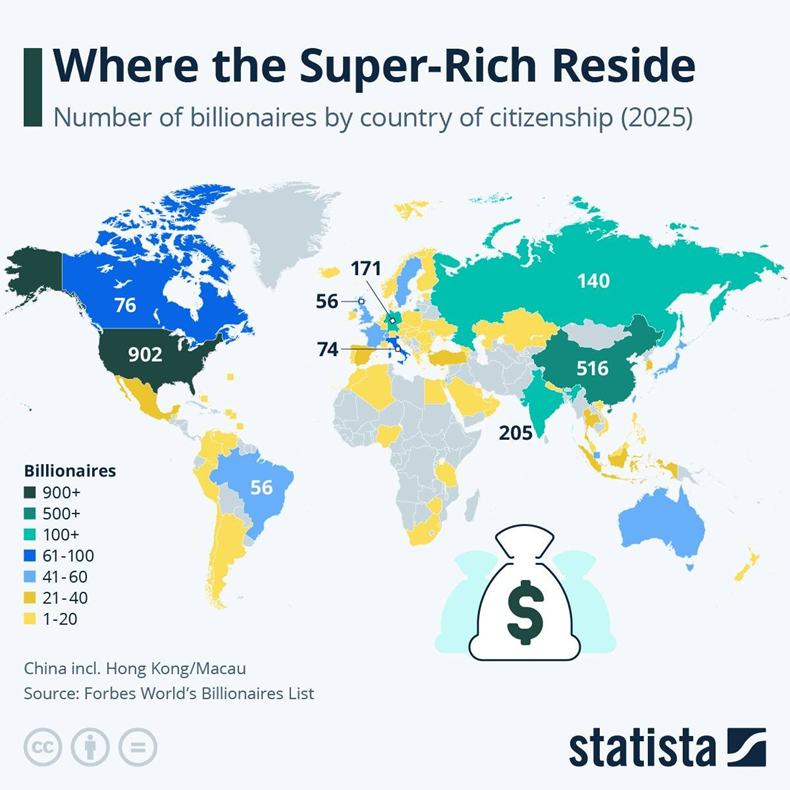Each week, we take you through the last seven days in seven charts.
1. Literally Off the Chart…
Under the new Trump administration, the US Economic Policy Uncertainty Index has surged to unprecedented levels, well above those seen during the global pandemic. In such an environment, CEOs and CFOs find it nearly impossible to make informed decisions regarding capital expenditures, hiring, or mergers and acquisitions. This uncertainty is likely to have serious repercussions for the job market and global economic growth.
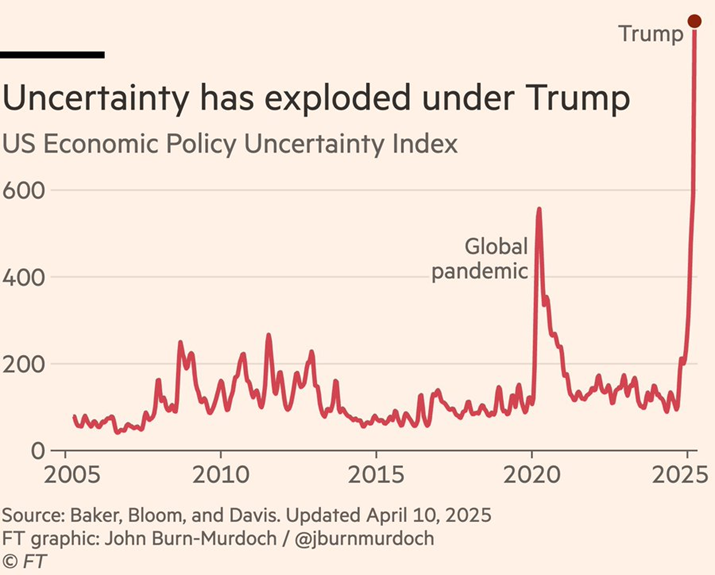
2. Wednesday Saw One of the Biggest Stock Market Day Rallies Ever
On Wednesday morning, the S&P 500 was on the verge of entering bear market territory. More importantly, the US appeared to be teetering on the edge of an emerging-market-style crisis, with bonds and the US dollar falling along with equities.
While President Trump may be indifferent to short-term stock market swings, it seems the threat of a bond market meltdown prompted a change in course. Just eight days after declaring “Liberation Day,” he announced a reduction of reciprocal tariff rates to a 10% baseline for the 60 countries previously facing higher tariffs. This 90-day suspension aims to create space for negotiations. At the same time, President Trump leaked on social media that he would increase tariffs on Chinese imports to 125%, citing China’s “lack of respect for global markets”. The 90-day tariff reprieve triggered one of the biggest single-day rises in stock market history.
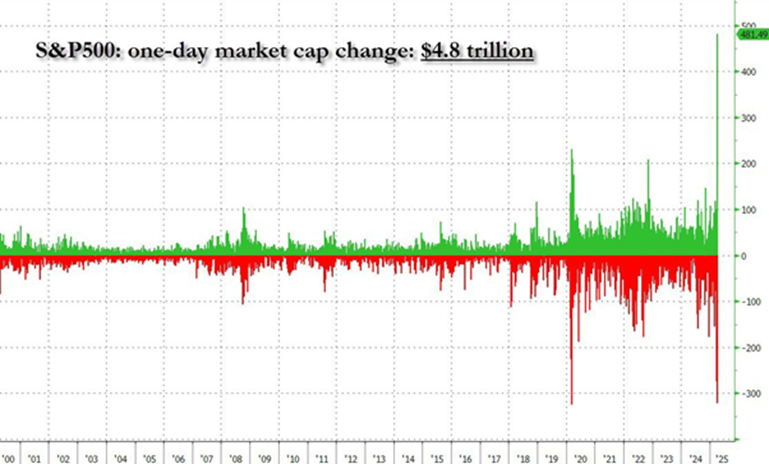
3. The Big Crocodile Jaw
While the S&P 500 and global equity markets plunged last week, gold surged to a new all-time high, surpassing $3,200 per ounce. As illustrated in the chart below, gold, a “real asset”, is now significantly diverging from the S&P 500, a “paper asset.”
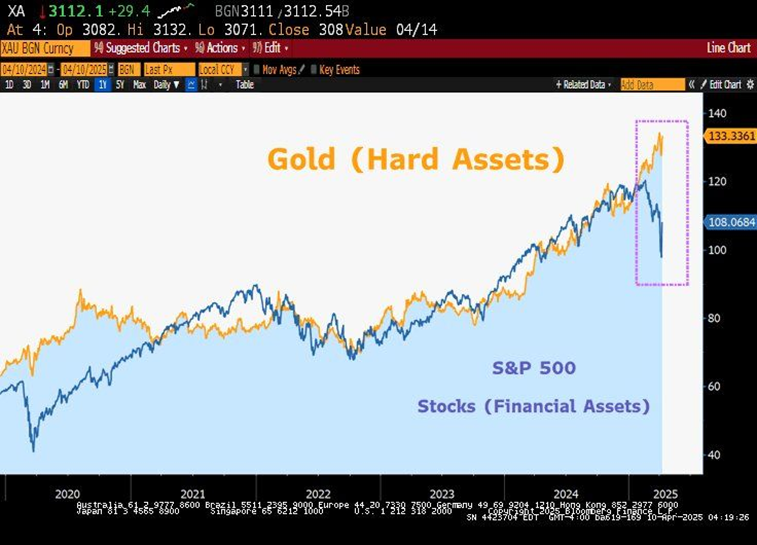
4. The Effective Tariff Rate in the US Remains at Record High
Despite President Trump’s recent reversal on reciprocal tariffs, the overall tariff burden outlined in the April 2nd plan has seen little change and remains around $490 billion. According to Strategas estimates, the $275 billion increase in tariffs on Chinese imports offsets most of the $158 billion in reductions announced on Wednesday.
As a result, the US is now facing the equivalent of the largest tax increase in over half a century. While future corporate and individual tax cuts could partially neutralise this impact, the broader economic consequences are still difficult to assess. Even after last week’s policy U-turn, tariff levels remain the highest since the 1930s.
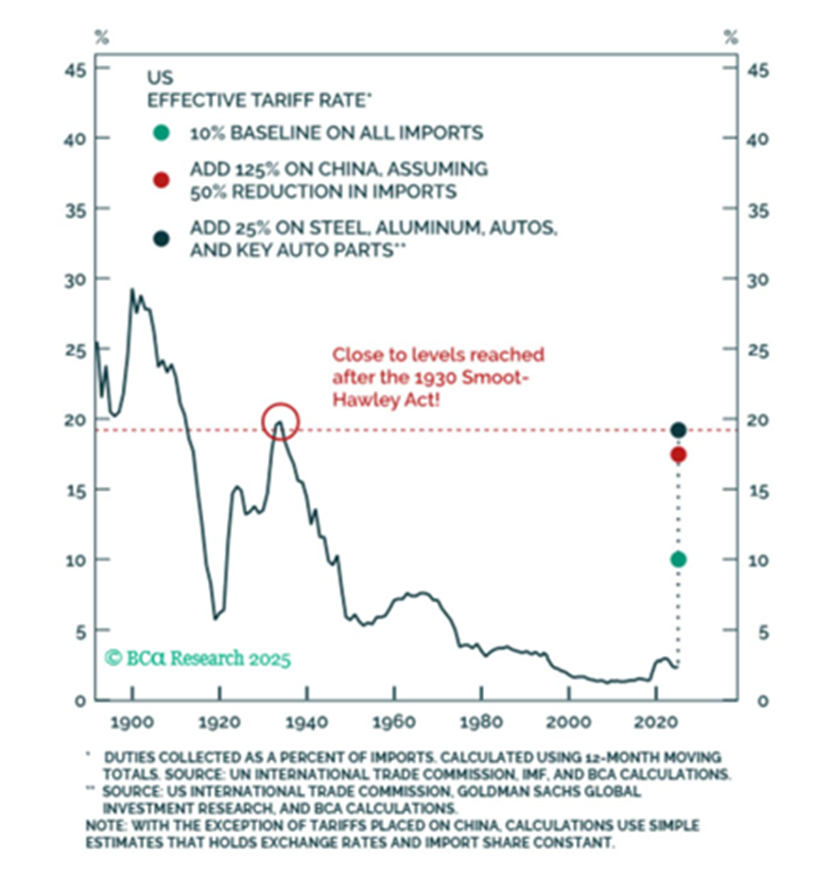
5. USA CDS Are Spiking
Credit default swap (CDS) spreads on US sovereign debt are surging, now trading wider than those of France and South Korea and nearing levels seen in Italy and Greece.
A credit default swap (CDS) is a financial derivative that enables investors to transfer credit risk to another party. It acts as a form of insurance against the default of a borrower. A widening CDS spread signals rising investor concerns over a country’s creditworthiness.
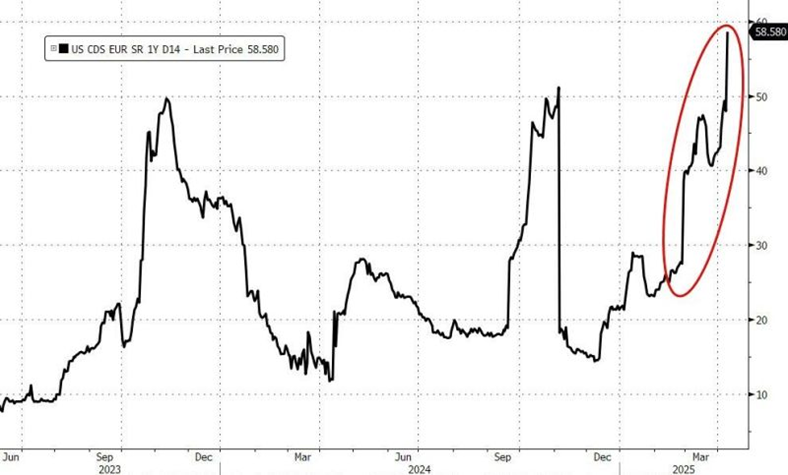
6. Today’s Global Trade Reality
This chart illustrates the current landscape of global trade relationships. Countries highlighted in blue designate the United States as their largest trading partner, while those in red identify China as their primary trade counterpart.
Trade volumes are measured by the combined value of exports and imports.

7. America Still Rules Billionaireville, but Look Who’s Closing In
As of 2025, the United States remains the world’s top hub for billionaires, with 902 individuals holding that status. However, China, including Hong Kong and Macau, is rapidly gaining ground with 516 billionaires.
India is also making its presence felt with 205 billionaires, while the rest of the global ultra-wealthy are spread across Europe, Russia, and other notable players such as Brazil and Canada, each with 56.
Moral of the story? Wealth has become a global phenomenon, though it still speaks mostly English and Mandarin.
